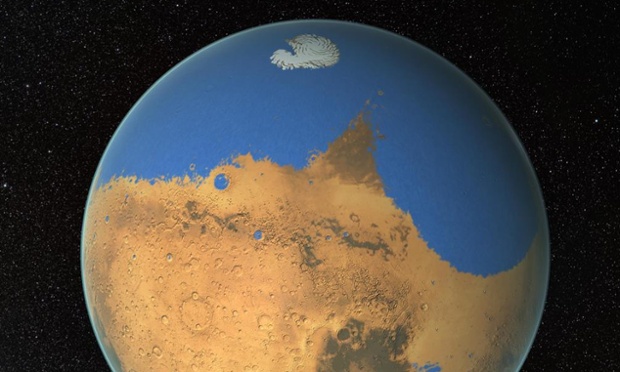March 7, 2015 – In the latest revelations from NASA, and the European Southern Observatory, isotopic measurements of detectable water on Mars shows a disproportionately high incidence of deuterium (heavy water). Deuterium on Mars is seven times greater in concentration than here on Earth. And in some of the basins and the polar ice caps deuterium levels are even higher.
The scientists who have written about this observed phenomena, posted in the online journal, Science, on March 5th, conclude that Mars had a significant ocean in the past and that much of the lighter water molecules were eventually lost to space over billions of years as the Martian atmosphere thinned.
Based on current concentrations of deuterium in observed water in the atmosphere and from the planet’s surface, the scientists calculate an ocean that would have reached a depth of 137 meters (450 feet) if it uniformly covered the planet. That’s deeper than Lake Erie (64 meters, 210 feet), the shallowest of North America’s Great Lakes.
In the artist rendering below it shows the ocean covering much of the northern hemisphere and almost 20% of the planet’s entire surface. For comparison, and remember Mars is smuch smaller than Earth, the Atlantic Ocean covers 17% of our planet.
As the solar wind stripped Mars of its atmosphere the oceans evaporated or became frozen. What’s left today. About 13% is still locked in Mars’ polar ice caps.
Along with the discoveries recently made by the Nasa Curiosity rover, a picture of the red planet is emerging awash in water for more than 1.5 billion years of its early history. In comparison Earth at age 1.5 billion already was teeming with single celled creatures swimming through its oceans.
Can we conclude that Mars had life based on these discoveries? Not absolutely, but the case for Mars as habitable and probably inhabited continues to get stronger.













